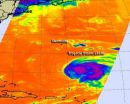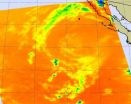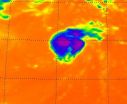(Press-News.org) Montreal, September 5, 2012 – Being the last one picked for the team, getting left out of the clique of cool girls, having no one to sit with at lunch… For children, social exclusion can impact everything from emotional well being to academic achievements.
But what does it mean for the kids doing the excluding? Is the cure a one-size-fits-all approach that requires kids to include others, regardless of the situation at hand? Not necessarily, says new research from a professor now at Concordia University.
Unlike previous studies where researchers created hypothetical situations and preselected the reasons for exclusion that kids could choose from, the Concordia study asked kids to talk about a time when they excluded a peer.
"Research that looks at kids' own point of view about social exclusion will help us do a better job of supporting their ability to successfully navigate these situations," says Holly Recchia, an assistant professor in Concordia's Department of Education and member of the Centre for Research in Human Development. She is first author of the study, con-ducted while she was a postdoctoral fellow at the University of Utah.
The recent study published in the journal Cognitive Development shows that the experiences of exclusion for those doing the excluding are actually much more diverse than what previous studies have shown, and that a more nuanced approach is needed to encourage social inclusion.
This approach allowed Recchia and her colleagues at the University of Utah to form a broader picture of exclusion. The kids' narratives included not just reasons for exclusion but also why they judged their reasons to be good or bad. For example, "it was a bad reason because now his feelings are hurt" or "it was a good reason because I don't work well with her."
In some cases, children tried to numb their negative feelings about exclusion by ignoring a situation, while in others they spontaneously looked for an alternative to exclusion. In both cases, they had mixed feelings about whether their reasons were good or bad.
"It's the search for alternatives to exclusion that we want to encourage. The fact that children can do this spontaneously reflects children's awareness of their own capacity to behave differently in the future and can be an entry point for intervention," says Recchia.
The study also showed that the experience of exclusion changes as kids got older. Seven year-olds mostly reported uncontrollable circumstances and peer pressure as reasons for exclusion, depicting themselves as blameless. As the youngsters reached their teenage years, however, they showed more responsibility when they talked about excluding others, often reporting reasons that were within their control.
This information could help researchers come up with age-specific interventions. In the case of younger kids, the best approach is to help them take responsibility for their actions, which would encourage them to see what they could have done differently.
"The most useful interventions will be the ones that allow kids to weigh different goals, across different kinds of situations," says Recchia. "This flexibility would allow them to handle exclusion in ways that minimize harm to other people while still recognizing their own legitimate desires and perspectives."
INFORMATION:
Related links:
Holly Recchia
Concordia's Department of Education
Centre for Research in Human Development
Cited study
Source:
Cléa Desjardins
Senior Advisor, External Communications
Concordia University Media Relations
Phone: 514-848-2424, ext. 5068
Cell: 514-909-2999
Email: clea.desjardins@concordia.ca
Web: concordia.ca/now/media-relations
Twitter: twitter.com/CleaDesjardins
END
CAMBRIDGE, MA -- Only about 1 percent of the human genome contains gene regions that code for proteins, raising the question of what the rest of the DNA is doing. Scientists have now begun to discover the answer: About 80 percent of the genome is biochemically active, and likely involved in regulating the expression of nearby genes, according to a study from a large international team of researchers.
The consortium, known as ENCODE (which stands for "Encyclopedia of DNA Elements"), includes hundreds of scientists from several dozen labs around the world. Using genetic ...
Infrared data from NASA's Aqua satellite shows that Tropical Storm Leslie has been causing problems for itself.
Tropical Storm Leslie has been on a slow track in the Atlantic, and because of that, the storm is kicking up cooler waters from below the ocean surface. Those cooler waters were seen in infrared imagery on Sept. 5 at 0611 UTC (2:11 a.m. EDT) taken by the Atmospheric Infrared Sounder (AIRS) instrument that flies aboard NASA's Aqua satellite. The cooler waters are responsible for Leslie's slow strengthening. Sea surface temperatures need to be at least as warm ...
Post-tropical cyclone John has been "flushed" out of existence in the eastern Pacific Ocean, and infrared NASA imagery revealed warmer cloud top temperatures and virtually no precipitation from John's remnants on Sept. 4.
When NASA's Aqua satellite flew over post-tropical storm John on Sept. 4 at 21:23 UTC (5:23 p.m. EDT) the Atmospheric Infrared Sounder (AIRS) instrument revealed that cloud top temperatures in the storm had warmed over the previous 24 hours. AIRS data also showed there was one very tiny area of convection (rising air that forms the thunderstorms that ...
For years policymakers have attempted to replace Medicare's fee-for- service payment system with approaches that pay one price for an aggregation of services. The intent has been to reward providers for offering needed care in the most appropriate and cost-effective manner. But many of these programs have known pitfalls, says Stuart Altman, an economist and the Sol C. Chaikin Professor of National Health Policy at the Heller School for Social Policy and Management, Brandeis University.
On Friday, Sept. 7, Altman and his Heller school colleague Robert Mechanic, will ...
NASA's Aqua satellite shows that tiny Tropical Storm Michael had some strong thunderstorms wrapped around its center and in a band of thunderstorms in its northeastern "arm" or quadrant.
The Atmospheric Infrared Sounder (AIRS) instrument that flies aboard NASA's Aqua satellite captured in infrared image of Tropical Storm Michael on Sept. 5 at 0611 UTC (2:11 a.m. EDT) and noticed the strongest thunderstorms and coldest cloud top temperatures around the center of circulation and in a band of thunderstorms to the northeast of Michael's center. Those cloud top temperatures ...
Be warned, popularity may cause lung cancer, heart disease, and emphysema.
New research from the University of Southern California (USC) and University of Texas finds that popular students in seven Southern California high schools are more likely to smoke cigarettes than their less popular counterparts.
The study, which appears online this week in the Journal of Adolescent Health, confirms trends observed in previous USC-led studies of students in the sixth through 12th grades across the United States and in Mexico.
"That we're still seeing this association more ...
Sinking through the inky ocean, it would seem that there is little light at depth: but you'd be wrong. 'In the mesopelagic realm [200 m] bioluminescence [light produced by animals] is very common', says Sönke Johnsen from Duke University, USA, explaining that many creatures are capable of producing light, yet rarely do so. But how much light do the inhabitants of the ocean floor (benthos) generate? Explaining that some bioluminescence is generated when organisms collide, Johnsen says, 'In the benthos you have a current moving over complicated ground with all the things ...
DURHAM, N.C. -- Crabs living half-a-mile down in the ocean, beyond the reach of sunlight, have a sort of color vision combining sensitivity to blue and ultraviolet light.
Their detection of shorter wavelengths may give the crabs a way to ensure they grab food, not poison.
"Call it color-coding your food," said Duke biologist Sönke Johnsen. He explained that the animals might be using their ultraviolet and blue-light sensitivity to "sort out the likely toxic corals they're sitting on, which glow, or bioluminesce, blue-green and green, from the plankton they eat, which ...
ROCHESTER, Minn. -- A minimally invasive procedure known as endovascular repair used for abdominal aortic aneurysms has a low rate of complications, even in high-risk patients such as those with kidney, heart or lung problems, a Mayo Clinic study shows. Researchers found that even when aneurysms ruptured, endovascular repair had lower mortality rates than open-abdominal surgery, the other treatment option. The findings are being presented at the Midwestern Vascular Surgical Society Annual Meeting, Sept. 6-8, in Milwaukee, Wis.
An abdominal aortic aneurysm is a weakened ...
BALTIMORE, MD (September 6, 2012)—A new study shows that when enough bacteria get together in one place, they can make a collective decision to grow an appendage and swim away. This type of behavior has been seen for the first time in marine sponges, and could lead to an understanding of how to break up harmful bacterial biofilms, such as plaque on teeth or those found on internal medical devices like artificial heart valves.
Bacteria have ways of communicating with each other, and scientists have now identified a new signaling system that, when there is a critical mass ...



